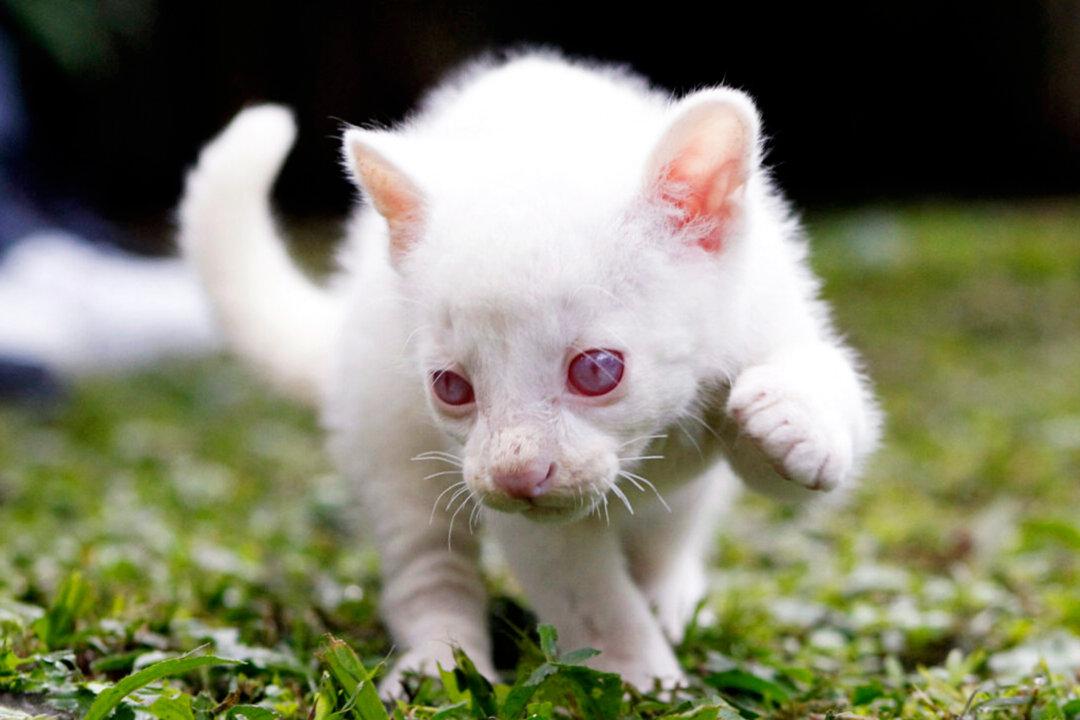A rare albino jaguarundi cub, a type of puma native to the Americas, was rescued in Colombia by emergency services. After receiving treatment from veterinarians, she was taken to a conservation park to live out her days safe from the threat of predators.
The cub, a rare white-haired, red-eyed female, was found in the Aburra Valley metropolitan area of northwestern Colombia. She is the first albino of her species ever reported in the country.





